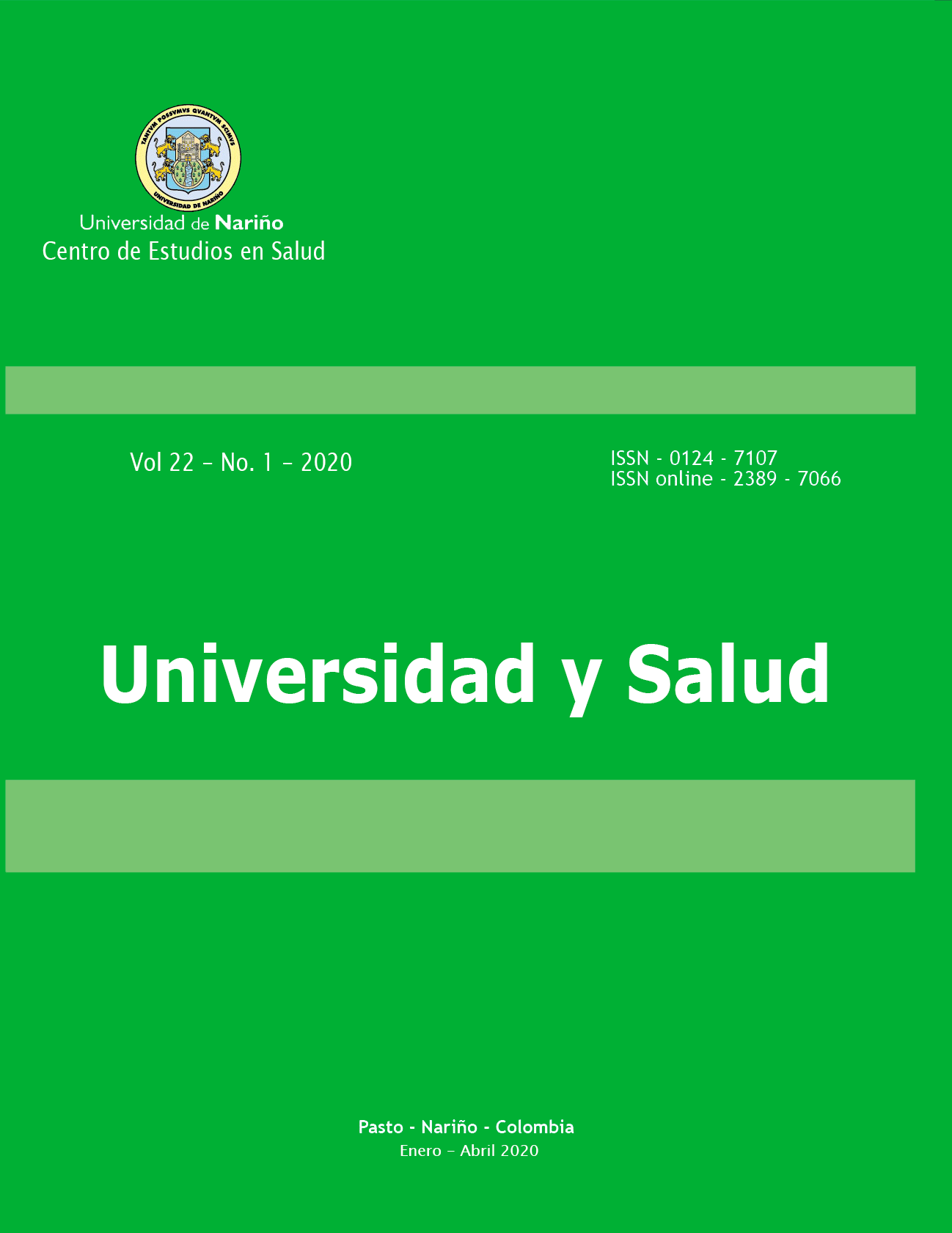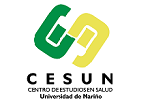Microbiological analysis of mobile devices of surgical personnel working at a health care institution in Pereira, Colombia, 2018
DOI:
https://doi.org/10.22267/rus.202201.177Keywords:
Cell phone, Surgical wound infection, Microbiological analysis, Cross infection, DisinfectionAbstract
Introduction: Cell phone use in hospital areas such as surgery rooms has become a common practice, which has increased both the risk of cross-contamination and the rates of surgical site infections. Objective: To determine microbial contamination of mobile devices belonging to surgical staff of a Health Care Institution in Pereira, Colombia during the first semester of 2018. Materials and methods: An observational, cross-sectional, descriptive study was conducted with a sample of ten mobile devices randomly chosen from health personnel working in the surgical room. Surface samples were collected from cell phone cases and bags using sterile swabs that were were kept in a 1% peptone salt solution until a deep plate count assay was performed on them. Results: The plate count confirmed the presence of mesophilic aerobes (93 CFUs), total coliforms (13 CFUs) as well as yeasts and molds (22 CFUs). Conclusion: The microbiological analysis showed elevated numbers of colony-forming units that could significantly increase the rates of infections associated with health care settings.
Downloads
Metrics
References
Selim HS, Abaza AF. Microbial contamination of mobile phones in a health care setting in Alexandria, Egypt. GMS Hyg Infect Control [Internet]. 2015;10:1–9. Disponible en: https://www.ncbi.nlm.nih.gov/pubmed/25699226
Banawas S, Abdel-Hadi A, Alaidarous M, Alshehri B, Bin Dukhyil AA, Alsaweed M, et al. Multidrug-resistant bacteria associated with cell phones of healthcare professionals in selected hospitals in Saudi Arabia. Can J Infect Dis Med Microbiol [Internet]. 2018:1–7. Disponible en: https://www.ncbi.nlm.nih.gov/pmc/articles/PMC6323467
Katsuse Kanayama A, Takahashi H, Yoshizawa S, Tateda K, Kaneko A, Kobayashi I. Staphylococcus aureus surface contamination of mobile phones and presence of genetically identical strains on the hands of nursing personnel. Am J Infect Control [Internet]. 2017;45(8):929–31. Disponible en: http://dx.doi.org/10.1016/j.ajic.2017.02.011
Bodena D, Teklemariam Z, Balakrishnan S, Tesfa T. Bacterial contamination of mobile phones of health professionals in Eastern Ethiopia: antimicrobial susceptibility and associated factors. Trop Med Health [Internet]. 2019;47(15):1–10. Disponible en: https://doi.org/10.1186/s41182-019-0144-y
Morvai J, Szabó R. A mobil kommunikációs eszközök szerepe a fertőzések átvitelében. Szisztematikus irodalomelemzés. Orv Hetil [Internet]. 2015;156(20):802–7. Disponible en: http://www.akademiai.com/doi/abs/10.1556/650.2015.30147
Hernández-orozco HG, Castañeda-narváez JL, Garza EA. Celulares y riesgo de infecciones intrahospitalarias. Infectol Pediatr [Internet]. 2017;30(2):45–7. Disponible en: http://www.medigraphic.com/pdfs/infectologia/lip-2017/lip172a.pdf
Leaper DJ, Edmiston CE. Global guidelines for the prevention of surgical site infection [Internet]. World Health Organization. 2016. Disponible en: http://linkinghub.elsevier.com/retrieve/pii/S0195670116305874
Debnath T, Bhowmik S, Islam T, Hassan Chowdhury MM. Presence of Multidrug-Resistant Bacteria on Mobile Phones of Healthcare Workers Accelerates the Spread of Nosocomial Infection and Regarded as a Threat to Public Health in Bangladesh. J Microsc Ultrastruct [Internet]. 2018;6(3):165–9. Disponible en: https://www.ncbi.nlm.nih.gov/pubmed/30221143
Paz-Montes A, Fuenmayor-Boscán A, Sandrea L, Colmenares J, Marín M, Rodríguez E. Riesgo microbiológico asociado al uso de teléfonos móviles en laboratorios clínicos hospitalarios de Maracaibo-Venezuela. Kasmera [Internet]. 2015;43(2):148–57. Disponible en: http://www.scielo.org.ve/pdf/km/v43n2/art07.pdf
Pérez Castro JA, Castillo Vázquez CM, Rueda Rodríguez A, Jiménez Díaz IB, Domínguez de la Peña MA. Los pequeños grandes detalles de la seguridad del paciente. Rev CONAMED [Internet]. 2012;17(3):130–5. Disponible en: http://dialnet.unirioja.es/descarga/articulo/4062824.pdf%5Cnhttp://dialnet.unirioja.es/servlet/extart?codigo=4062824
Aquiahuatl R, Pérez C. Manual de prácticas de laboratorio de microbiología general. 2004. 119 p.
World Health Organisation (WHO). Campos electromagnéticos y salud pública: teléfonos móviles [Internet]. 2014. Disponible en: https://www.who.int/es/news-room/fact-sheets/detail/electromagnetic-fields-and-public-health-mobile-phones
Pérez-Cano HJ, Reyes Santos MF, César Moreno BM. Microbiota in mobile phones of medical ophthalmologists. Arch Soc Esp Oftalmol [Internet]. 2019;94(2):55–9. Disponible en: https://doi.org/10.1016/j.oftale.2018.11.009
Ustun C, Cihangiroglu M. Health care workers’ mobile phones: a potential cause of microbial cross-contamination between hospitals and community. J Occup Environ Hyg. 2012;9(9):538–42.
Dorost A, Safari Y, Akhlaghi M. Microbial contamination data of keypad and touch screen of cell phones among hospital and non-hospital staffs – A case study : Iran. Data Br [Internet]. 2018;20:80–4. Disponible en: http://dx.doi.org/10.1016/j.dib.2018.07.041
Murgier J, Coste J, Cavaignac E, Chiron P, Bonnevialle P, Laffosse J. Microbial flora on cell-phones in an orthopedic surgery room before and after decontamination. Orthop Traumatol Surg Res [Internet]. 2016;102(8):1093–6. Disponible en: http://dx.doi.org/10.1016/j.otsr.2016.09.014
Pillet S, Berthelot P, Mory O, Gay C, Viallon A, Lucht F, et al. Contamination of healthcare workers ’ mobile phones by epidemic viruses. Clin Microbiol Infect [Internet]. 2016;22(5):456.e1-456.e6. Disponible en: http://dx.doi.org/10.1016/j.cmi.2015.12.008
World Health Organisation (WHO). WHO recommends 29 ways to stop surgical infections and avoid superbugs [Internet]. 2016. Disponible en: http://www.who.int/news-room/detail/03-11-2016-who-recommends-29-ways-to-stop-surgical-infections-and-avoid-superbugs
Brady RRW, Verran J, Damani NN, Gibb AP. Review of mobile communication devices as potential reservoirs of nosocomial pathogens. J Hosp Infect [Internet]. 2009;71(4):295–300. Disponible en: http://dx.doi.org/10.1016/j.jhin.2008.12.009
Sánchez FP. La búsqueda de las relaciones causales : el desafío del ejercicio diario de un epidemiólogo. Rev Medica Risaralda [Internet]. 2012;18(2):165–71. Disponible en: http://revistas.utp.edu.co/index.php/revistamedica/article/view/7913/4809



















